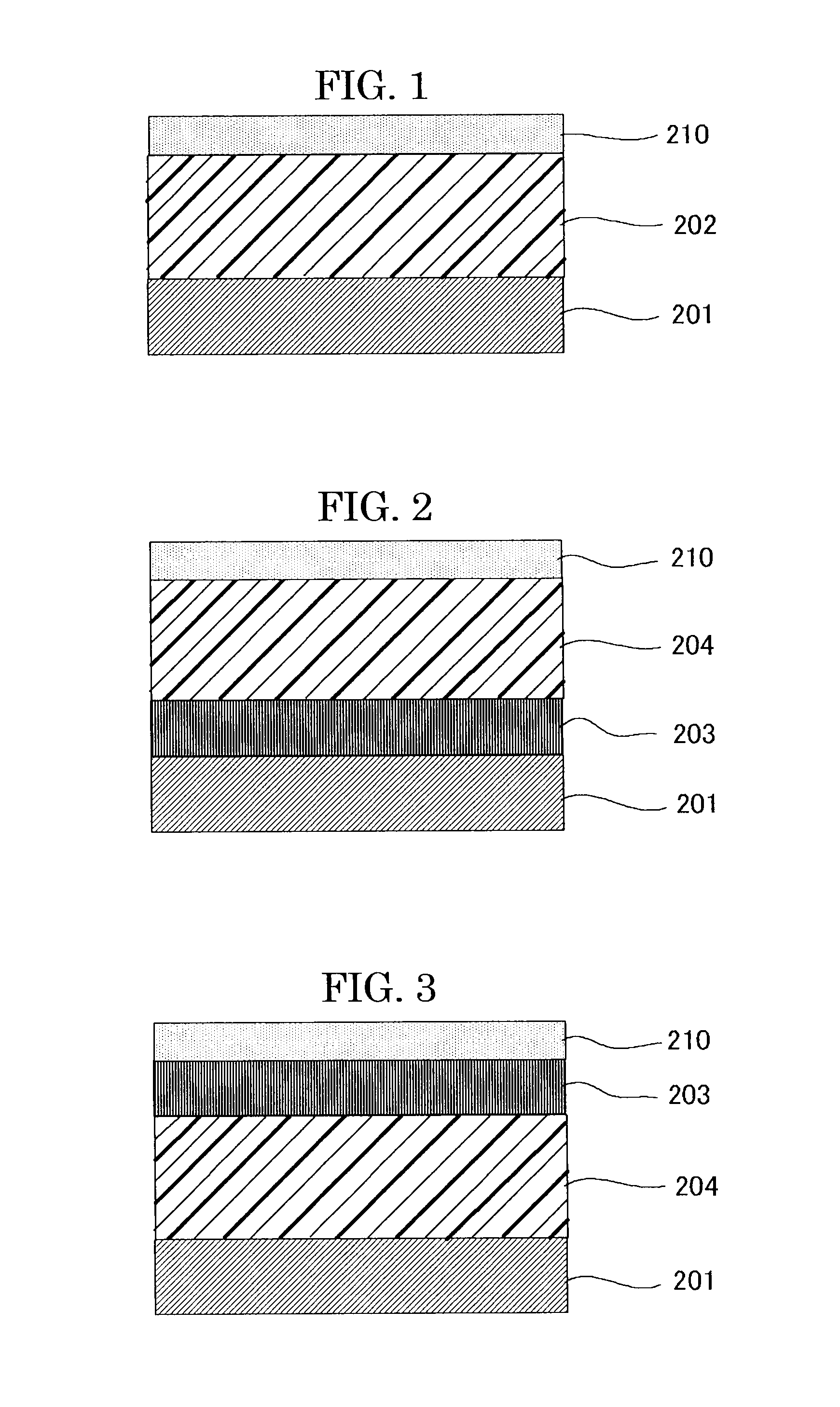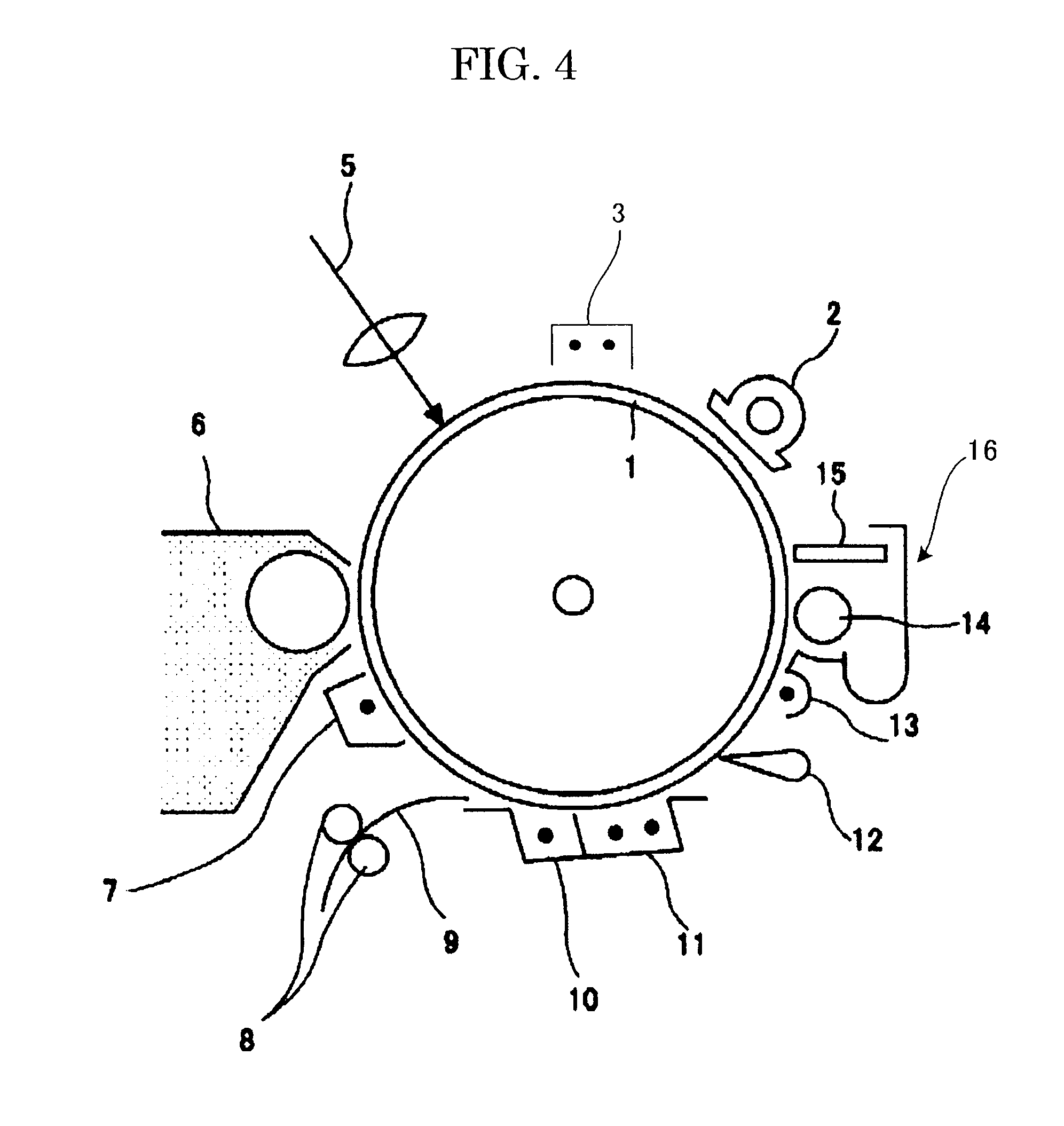Electrophotographic photoconductor, image forming apparatus using the same, and process cartridge
a photoconductor and photoconductor technology, applied in the field of electrographic photoconductor, image forming apparatus using the same, and process cartridges, can solve the problems of photosensitivity tending to degrade, image degradation due to image blur, and superior user-friendliness, so as to prevent the increase of residual potential and improve the effect of image degradation
- Summary
- Abstract
- Description
- Claims
- Application Information
AI Technical Summary
Benefits of technology
Problems solved by technology
Method used
Image
Examples
synthesis example 1
Synthesis of Titanylphthalocyanine Crystal
[0475]The synthesis of titanylphthalocyanine crystal was carried out in accordance with the method described in Japanese Patent Application Laid-Open (JP-A) No. 2004-83859. Specifically, 292 g of 1,3-diminoisoindoline, and 1,800 g of sulfolane were mixed, and 20.4 g of titanium tetrabuthoxide was delivered by drops into the mixture under nitrogen gas stream. After completion of the dropping, the mixture was gradually raised in temperature to 180° C. and stirred for 5 hours while maintaining the reaction temperature from 170° C. to 180° C. so that the components were reacted. After completion of the reaction, the reaction product was left standing to cool, and then the precipitate was filtered and washed with chloroform until the powder turned blue. Next, the powder washed with methanol several times, further washed with 80° C. hot water several times, and the dried, thereby obtaining a coarse titanylphthalocyanine.
[0476]The coarse titanylpht...
example 1
Production of Electrophotographic Photoconductor
[0524]An electrophotographic photoconductor of Example 1 was produced in a similar manner to that described in Comparative Example 7, except that is the charge transporting material for the surface protective layer was changed to a charge transporting material having the following structural formula (oxidation potential: 0.89V vs SCE, melting point: 93.5° C.).
[0525]
example 2
Production of Electrophotographic Photoconductor
[0526]An electrophotographic photoconductor of Example 2 was produced in a similar manner to that described in Comparative Example 8, except that the charge transporting material for the surface protective layer was changed to a charge transporting material having the following structural formula (oxidation potential: 0.89V vs SCE, melting point: 93.5° C.).
[0527]
PUM
 Login to View More
Login to View More Abstract
Description
Claims
Application Information
 Login to View More
Login to View More - R&D
- Intellectual Property
- Life Sciences
- Materials
- Tech Scout
- Unparalleled Data Quality
- Higher Quality Content
- 60% Fewer Hallucinations
Browse by: Latest US Patents, China's latest patents, Technical Efficacy Thesaurus, Application Domain, Technology Topic, Popular Technical Reports.
© 2025 PatSnap. All rights reserved.Legal|Privacy policy|Modern Slavery Act Transparency Statement|Sitemap|About US| Contact US: help@patsnap.com



